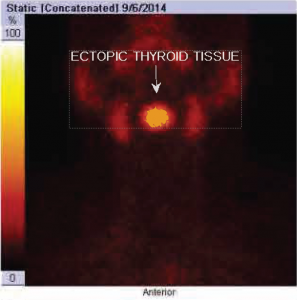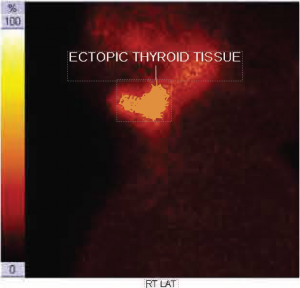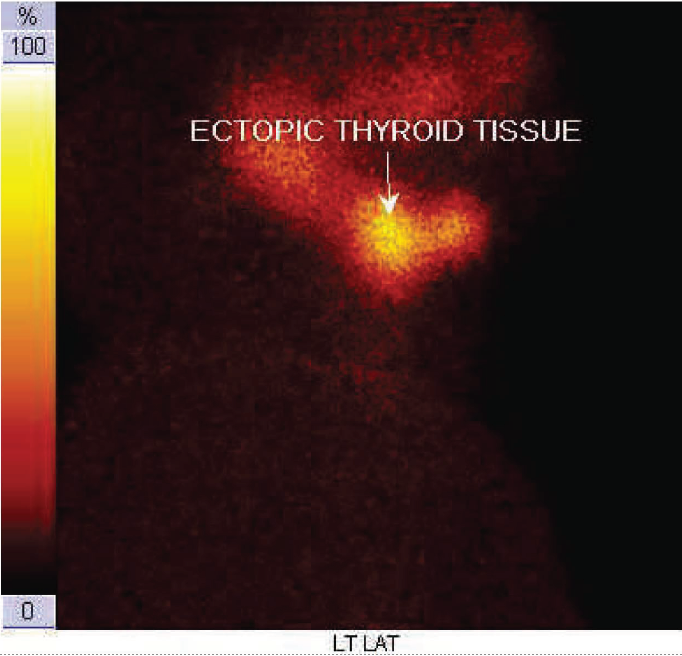Background
A 40-year-old female presented with the complaints of a foreign body sensation in the throat associated with gradually progressive difficulty in swallowing since 4 months. She had no significant past medical history and was not on any regular medications. Clinical examination revealed no neck swelling and no cervical lymphadenopathy.
Diagnosis
Indirect laryngoscopic examination revealed a solid pink spherical midline mass located in the posterior part of the tongue. A presumptive diagnosis oflingual thyroid was considered and she was further evaluated. Thyroid function tests and thyroid radioisotope scan were performed. Thyroid function tests showed elevated TSH 60IU/ml (0.45-4.5) with a low free thyroxine of 0.50ng/dl (0.8-1.8) and low free triiodothyronine of 1.2pg/ml (1.4-4.4). A radionuclide scan was carried out using 99m technetium pertechnetate which showed marked isotope uptake at the base of the tongue with no uptake in the normal thyroid location in the neck {Figure 1). She was diagnosed as a case of lingual thyroid with hypothyroidism and started on thyroxine treatment. During subsequent follow up, the patient showed significant improvement of symptoms and shrinkage of the lingual thyroid was noted.
Discussion
Lingual thyroid gland is a rare developmental thyroid anomaly which occurs due to the failure of the thyroid gland to descend to its normal location in the neck during embryogenesis. 90 per cent of reported cases of ectopic thyroid are found in the base of the tongue. It is more common in females. 30-60 per cent of patients with ectopic thyroid present have biochemica evidence of hypothyroidism. Thyroxine replacement therapy may be useful in reducing the size ofthe mass in patients with mild clinical symptoms and hypothyroidism as was in our case. However, as malignant transformation has been reported, these patients need to be under regular follow-up as surgic
 Back to Site
Back to Site


